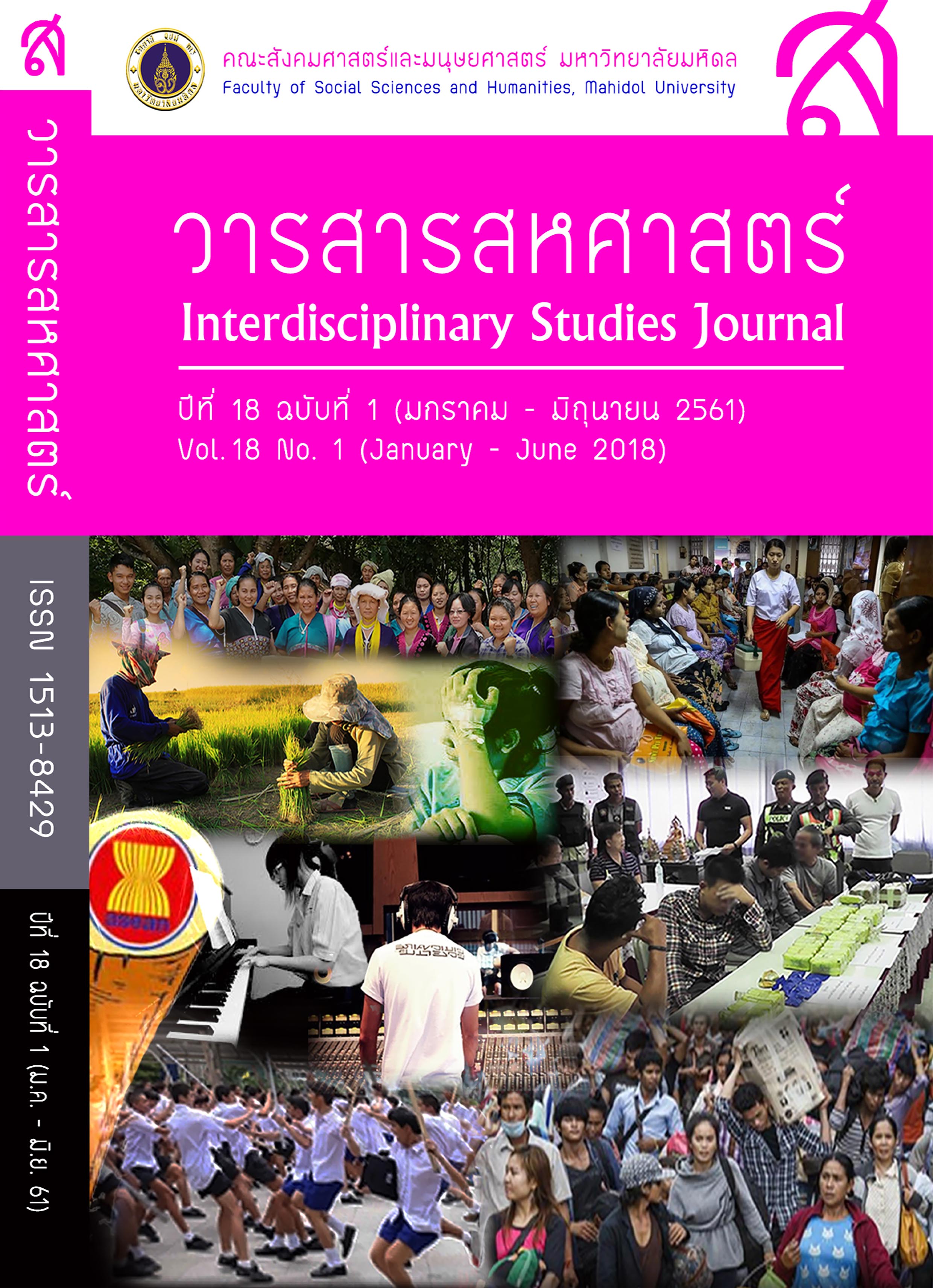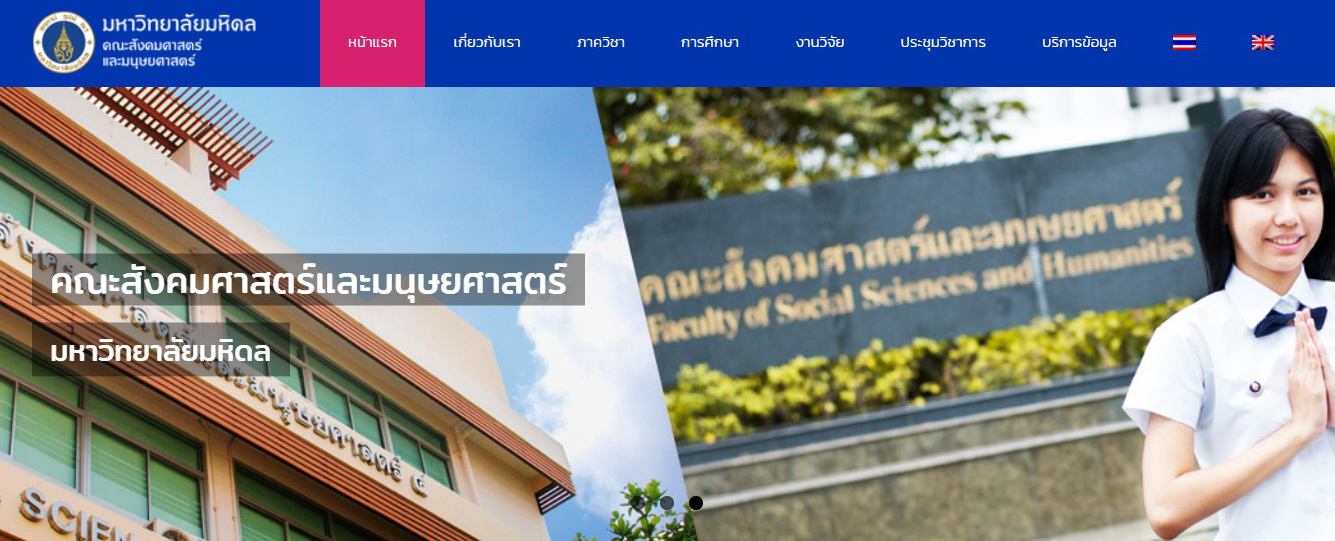Ecological Approach to Vocabulary Density Estimation
คำสำคัญ:
ECOLOGICAL APPROACH, VOCABULARY DENSITYบทคัดย่อ
This study scrutinizes to what degree an extension of the Capture-Recapture (CR) approach, extrapolated from ecology, gives us further insight into second language (L2) productive lexical density. Previous CR studies that have adopted this method to estimate L2 productive vocabulary size have typically taken only two written samples, produced within a few days of each other, from the participants. Results have invariably shown that this approach does not measure absolute vocabulary size. Another issue that compromises the CR scores is the kind of task used to elicit samples of productive vocabulary. In ecology there is an assumption that all animals of the target population have an equal chance of being captured. In a lexical context this assumption would translate as that all vocabulary items have an equal chance of being produced. This assumption presents a serious problem to overcome because different lexical items have different probabilities of being elicited.
This paper addresses both issues. On the one hand, three samples from 26 Thai students of Spanish as L2 have been taken within a period of two weeks (referred to as “an extension of the CR method”). On the other hand, a context-free task based on the Roman alphabet was used to elicit productive vocabulary. The results of this approach were compared to those of the CR method (using only the first two samples). The overall estimates are higher when using three samples. However, once again, the scores do not give absolute vocabulary size. A discussion of the method’s assumptions is provided together with an interpretation of the results.
เอกสารอ้างอิง
Beretta, A., Campbell, C., Carr, T. H., Huang, J., Schmitt, L. M., Christianson, K., & Cao, Y. (2003). An ER-fMRI investigation of morphological inflection in German reveals that the brain makes a distinction between regular and irregular forms. Brain and Language, 85 (1), pp 67-92.
Fitzpatrick, T. (2000). Using Word Association Techniques to Measure Productive Vocabulary in a Second Language. Language Testing Update, 27, 64-70.
Jaeger, J. J., Lockwood, A. H., Kemmerer, D. L., van Valin, R. D. Jr., Murphy, B. W., & Khalak, H. G. (1996). A Positron Emission Tomographic Study of Regular and Irregular Verb Morphology in English. Language, 72 (3), pp 451-497.
Krebbs, J. C. (1999). Ecological Methodology. Addison-Welsey Educational Publishers, Inc.
Laufer, B., Nation, P. (1995). Vocabulary size and use: lexical richness in L2 written productions. Applied Linguistics 16: 307-322.
Laufer, B., Nation, P. (1999), A vocabulary-size test of controlled productive ability. Language Testing, 1 (1): 33.
Laufer, B. (2002a). Computer Adaptive Test of Size and Strength, Paper presented at Second Language Vocabulary Acquisition Colloquium, Leiden, March 2002.
Malvern, D. D., & Richards, B. J. (1997). A new measure of lexical diversity. In A. Ryan &
A. Wray (Eds.), Evolving models of language (pp. 58-71). Clevedon: Multilingual Matters.
Meara, P., & Fitzpatrick, T. (1999). Lex30: an improved method of assessing productive vocabulary in an L2. System 28. pp. 19-30.
Meara, P., and Olmos Alcoy, J. C., (2010). Words as species: An alternative approach to
estimating productive vocabulary size. Reading in a Foreign Language, 22. pp. 222-236.
Nation, I. S. P. (2001). Learning Vocabulary in Another Language, Cambridge University
Press.
Petersen, C. G. J. (1896). The yearly immigration of young plaice into the Linsfiord from the German Sea. Rep. Dan. Biol. Stn, 6, 5–84.
Rodríguez-Fornells, A., Munte, T. F., & Clahsen, H. (2002). Morphological Priming in Spanish verb forms: an ERP repetition priming study. Journal of CognitiveNeuroscience, 14 (3), pp 443-454.
Seber, G. A. F. (1973). The estimation of animal abundance and related parameters. Bristol: J. W. Arrowsmith Ltd.
Williams, J., Segalowitz, N., & Leclair, T (2014). Estimating second language productive
vocabulary size: A capture-recapture approach. The Mental Lexicon, 9 (1), 23-47.

ดาวน์โหลด
เผยแพร่แล้ว
รูปแบบการอ้างอิง
ฉบับ
ประเภทบทความ
สัญญาอนุญาต
สหศาสตร์: วารสารสังคมศาสตร์และมนุษยศาสตร์ ให้ความสำคัญกับการคุ้มครองลิขสิทธิ์และสิทธิของผู้นิพนธ์ในการเผยแพร่ผลงานวิชาการ โดยมีวัตถุประสงค์เพื่อส่งเสริมความโปร่งใส ความถูกต้องตามหลักวิชาการ และสอดคล้องกับแนวปฏิบัติสากล ทั้งนี้ วารสารกำหนดนโยบายดังต่อไปนี้
|
1. การยอมรับเงื่อนไขการเผยแพร่ - ผู้นิพนธ์ที่ส่งบทความเพื่อตีพิมพ์ ต้องปฏิบัติตามนโยบายและเงื่อนไขการเผยแพร่ของวารสารโดยเคร่งครัด - การส่งบทความถือเป็นการยอมรับให้นำบทความเข้าสู่กระบวนการพิจารณาและการเผยแพร่ตามมาตรฐานของวารสาร |
|
2. การโอนลิขสิทธิ์ - เมื่อบทความได้รับการตอบรับเพื่อตีพิมพ์ ผู้เขียนโอนลิขสิทธิ์ของบทความให้แก่วารสาร - วารสารมีสิทธิ์เผยแพร่ ทำซ้ำ และเผยแพร่บทความในทุกรูปแบบ ทั้งสิ่งพิมพ์ เว็บไซต์ และสื่อออนไลน์อื่น ๆ |
|
3. สิทธิ์ของผู้นิพนธ์หลังการโอนลิขสิทธิ์ - ผู้นิพนธ์ยังคงมีสิทธิ์ใช้บทความเพื่อวัตถุประสงค์ทางวิชาการ เช่น การสอน การวิจัยส่วนบุคคล การใช้ประกอบวิทยานิพนธ์ หรือการเผยแพร่ในแพลตฟอร์มที่ไม่ใช่เชิงพาณิชย์ - การนำบทความไปใช้เพื่อวัตถุประสงค์เชิงพาณิชย์ ต้องได้รับอนุญาตจากวารสารก่อนเป็นลายลักษณ์อักษร |
|
4. การเผยแพร่ภายใต้สัญญาอนุญาตสาธารณะ (Creative Commons License) - บทความทั้งหมดในวารสารจะเผยแพร่ภายใต้สัญญาอนุญาต Creative Commons Attribution-NonCommercial-NoDerivatives 4.0 International (CC BY-NC-ND 4.0) - บุคคลอื่นสามารถเผยแพร่หรือแบ่งปันบทความได้โดยต้องให้เครดิตแก่ผู้นิพนธ์ต้นฉบับ แต่ห้ามแก้ไข ดัดแปลง หรือใช้ในเชิงพาณิชย์ |
|
5. ความถูกต้องของเนื้อหาและการใช้สื่อจากบุคคลที่สาม - ผู้เขียนต้องรับรองว่าบทความที่ส่งเพื่อตีพิมพ์เป็นผลงานต้นฉบับของตนเอง ไม่ได้ส่งซ้ำซ้อน (duplicate submission) และไม่ละเมิดลิขสิทธิ์หรือคัดลอกผลงานของผู้อื่น รวมถึงไม่มีการปลอมแปลงข้อมูล การตีพิมพ์ซ้ำ หรือการกระทำใด ๆ ที่ขัดต่อหลักจริยธรรมทางวิชาการ - ผู้เขียนต้องรับผิดชอบในการขออนุญาตใช้สื่อจากบุคคลที่สาม เช่น ภาพ ตาราง หรือกราฟิก และต้องอ้างอิงหรือให้เครดิตอย่างถูกต้องน |
|
6. ข้อจำกัดความรับผิดชอบ (Disclaimer) - บทความที่ได้รับการตีพิมพ์ในวารสารสหศาสตร์: วารสารสังคมศาสตร์และมนุษยศาสตร์ถือเป็นลิขสิทธิ์ของวารสาร - ข้อความ ข้อมูล และข้อคิดเห็นที่ปรากฏในบทความเป็นความรับผิดชอบของผู้เขียนแต่ละท่านโดยตรง มิได้สะท้อนถึงทัศนะหรือจุดยืนของกองบรรณาธิการหรือหน่วยงานที่เกี่ยวข้อง - หากบทความมีข้อผิดพลาดหรือการละเมิดสิทธิ์ใด ๆ ความรับผิดชอบทั้งหมดเป็นของผู้เขียนแต่เพียงผู้เดียว - การนำบทความไปใช้ในเชิงพาณิชย์ ต้องได้รับอนุญาตเป็นลายลักษณ์อักษรจากบรรณาธิการวารสารก่อน ทั้งนี้ ผู้ขออนุญาตต้องจัดทำคำชี้แจงเกี่ยวกับวัตถุประสงค์และลักษณะการใช้งานอย่างชัดเจน การใช้บทความในเชิงพาณิชย์โดยไม่ได้รับอนุญาตถือเป็นความรับผิดชอบของผู้ใช้แต่เพียงผู้เดียว |




